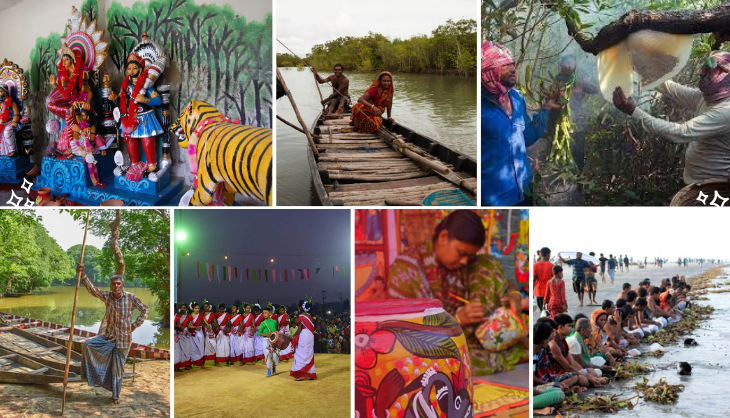7 Interesting Facts About the Cultural Heritage of The Sundarbans
Welcome to the fascinating Sundarbans, an area rich in cultural significance as well as stunning natural beauty. This region is alive with rich customs and enthralling tales woven into the very fabric of its landscapes, in addition to being home to the magnificent Royal Bengal Tiger.
Why Know About the Cultural Heritage of the Sundarbans?
Understanding the local way of life strengthens our bonds with the local people and their surroundings. More than just respecting their history, it involves recognizing how their deeply rooted traditions and convictions continue to shape the way they conduct their daily lives. This realization alters our perception of and interactions with this special place when we are there.
Discovering the cultural legacy of the Sundarbans is travelling into a world where the forest and the sea are an integral part of life in all its forms. The way of life and customs of the local people reflect their deep regard and adoration for the natural world. From the fishermen who pray for safety and a good catch to the honey collectors who perform rituals before entering the forest to collect honey, every practice is deeply rooted in a cultural context that values harmony with nature.
In essence, the rich cultural legacy of the Sundarbans enhances our trip, transforming it from a simple sightseeing experience into an insightful immersion into the lives of people who have adapted to survive in one of the world’s most demanding yet stunning landscapes. Knowing this legacy encourages us to appreciate and protect the invisible elements that make the Sundarbans genuinely unique, in addition to observing them.
Fascinating Cultural Facts of The Sundarbans:
1. The Bonbibi Story:
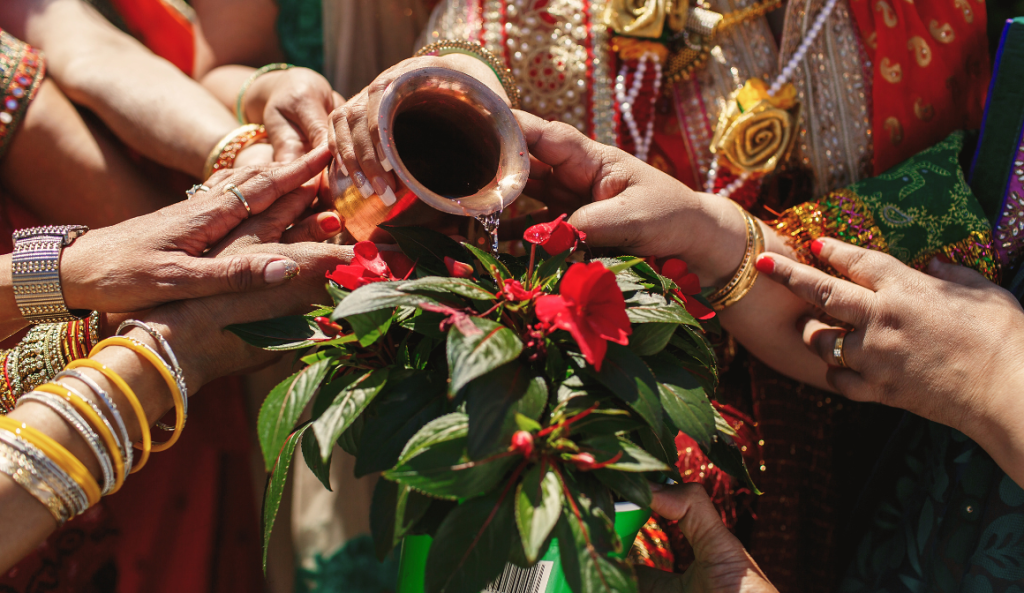
The Hindu and Muslim communities of the Sundarbans honour Bonbibi, the “guardian spirit of the forest,” as a central figure in local folklore that prevents a variety of threats, including the formidable Royal Bengal tigers.
The tales of Bonbibi portray her as a defender who keeps people safe when they venture into the forest, be it for exploration or subsistence, and are passed down through the generations, thereby maintaining the devotion and respect of the community for the natural world that provides for their needs.
2. The Fishermen’s Lore:
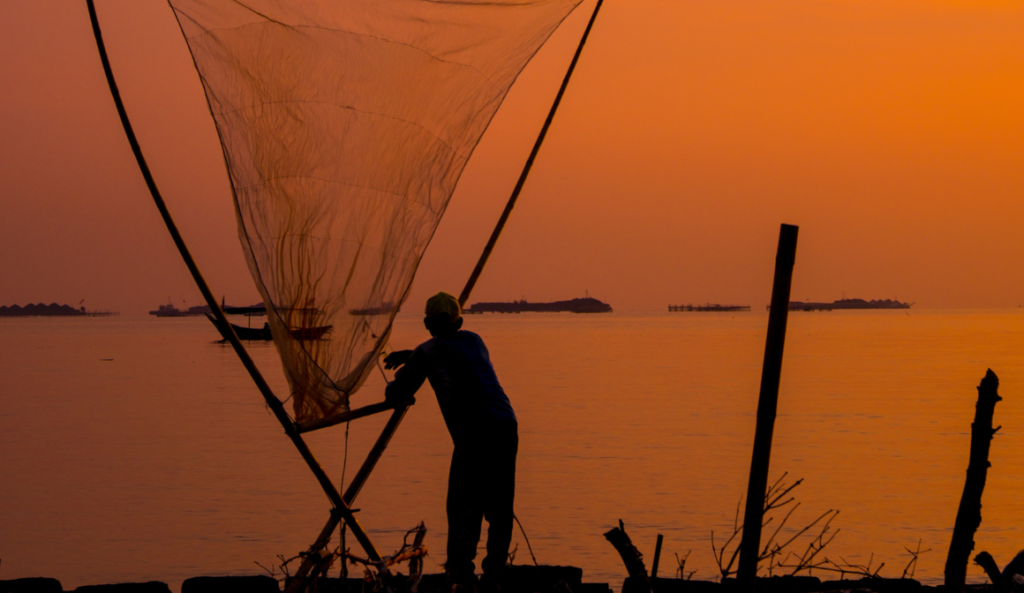
Before they set out to sea, fishermen in the Sundarbans perform unusual rituals and sing folk songs. These deeply spiritual practices ask the forest and water deities for blessings for protection and a bountiful catch.
These customs demonstrate the fishermen’s respect for the environment and their reliance on heavenly provision for their well-being. Reminding the community of its relationship to and reliance on its natural resources, the prayers, and songs are moving and emotional.
3. Rituals of Honey Collectors:
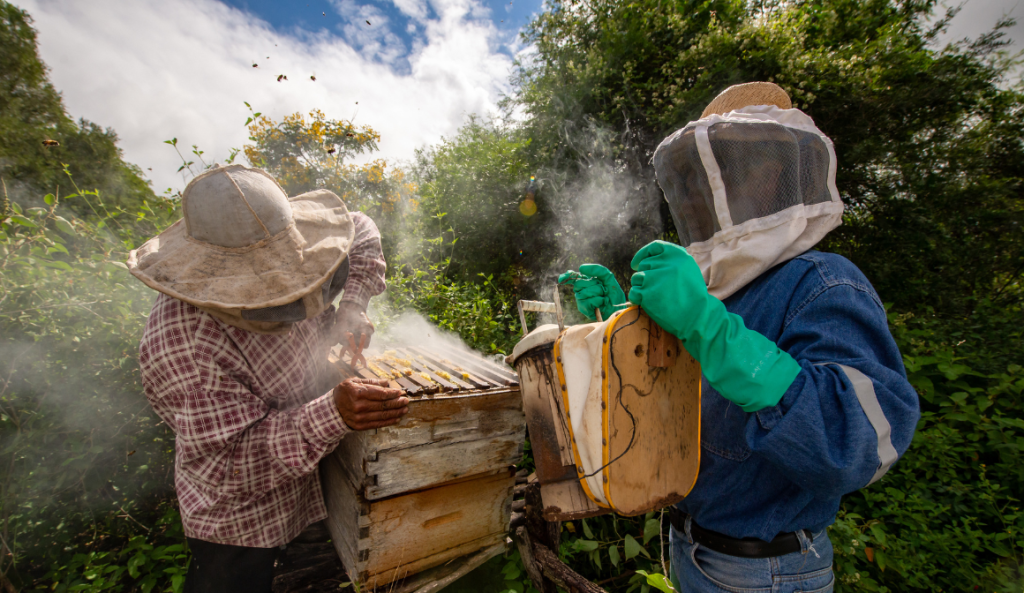
Honey collectors, or Moulis, in the Sundarbans, perform specific rituals to seek permission from Bonbibi before collecting honey from the forest. This practice emphasizes the forest’s spiritual guardians’ profound regard and acknowledgement.
They acknowledge the dangers of their work and honour the forces thought to control the natural world by asking for Bonbibi’s blessings. These customs bear witness to the mutually beneficial relationship that exists between humans and the forest.
4. The Zamindari Influence:
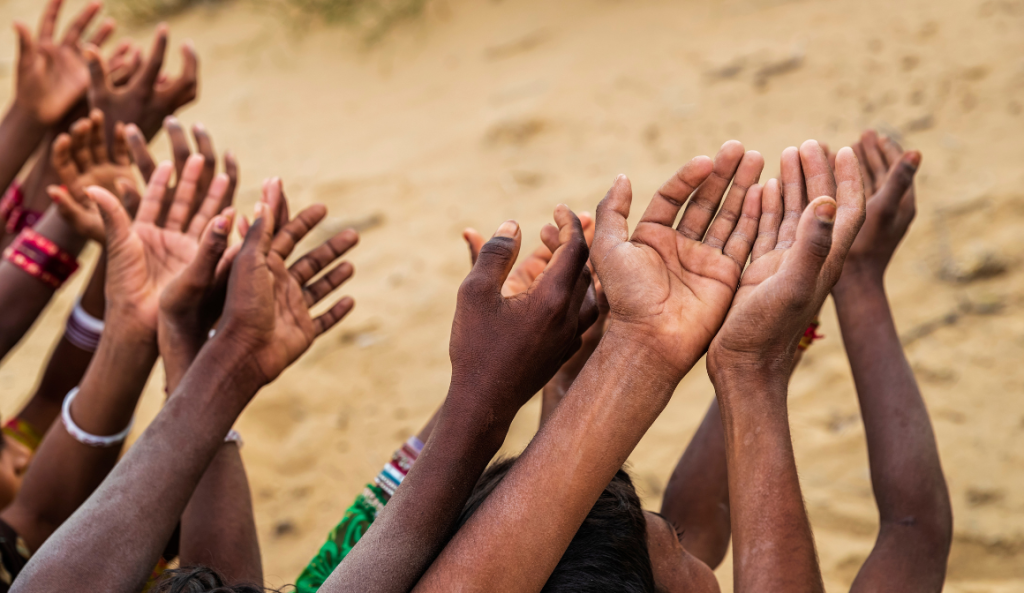
The region’s history is dotted with remnants from the Zamindari period, including ruins of buildings and temples. Local landlords, known as zamindars, ruled over this region at one point in history, as these historical sites recall.
This era’s cultural and architectural influences add to the historical fabric of the Sundarbans and provide insight into the socioeconomic circumstances that shaped the area in the past.
5. The Folk Dances and Music:
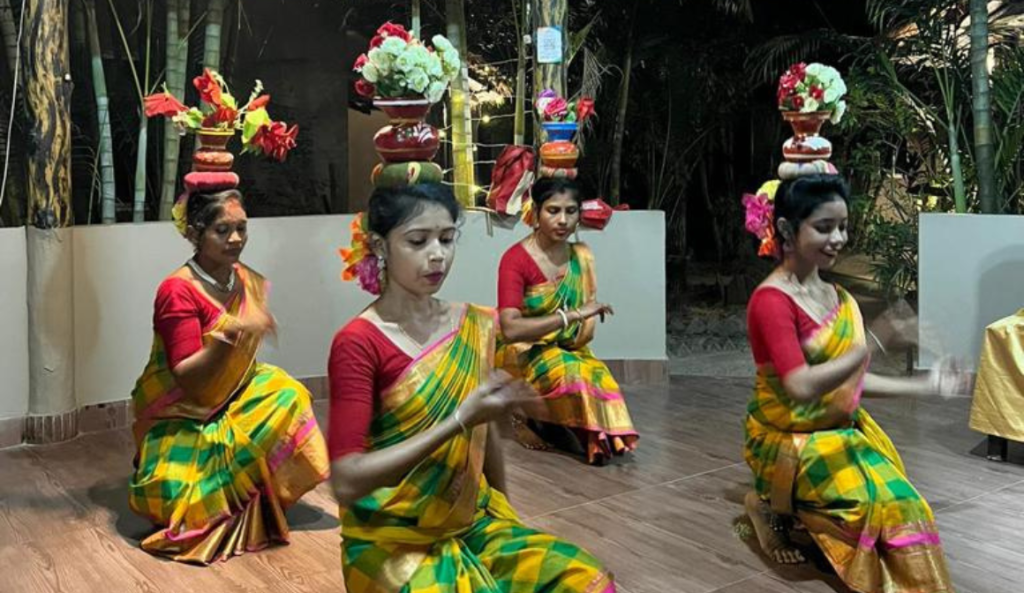
Folk dances and music such as Jhumur and Bhatiali play a crucial role in local festivals and celebrations, reflecting the joys and struggles of daily life in the Sundarbans. These traditional artistic mediums convey the identity, feelings, and narratives of the community in addition to providing entertainment.
In addition to fostering closer community ties, they serve as a vehicle for passing down historical accounts and cultural values.
6. Local Crafts:
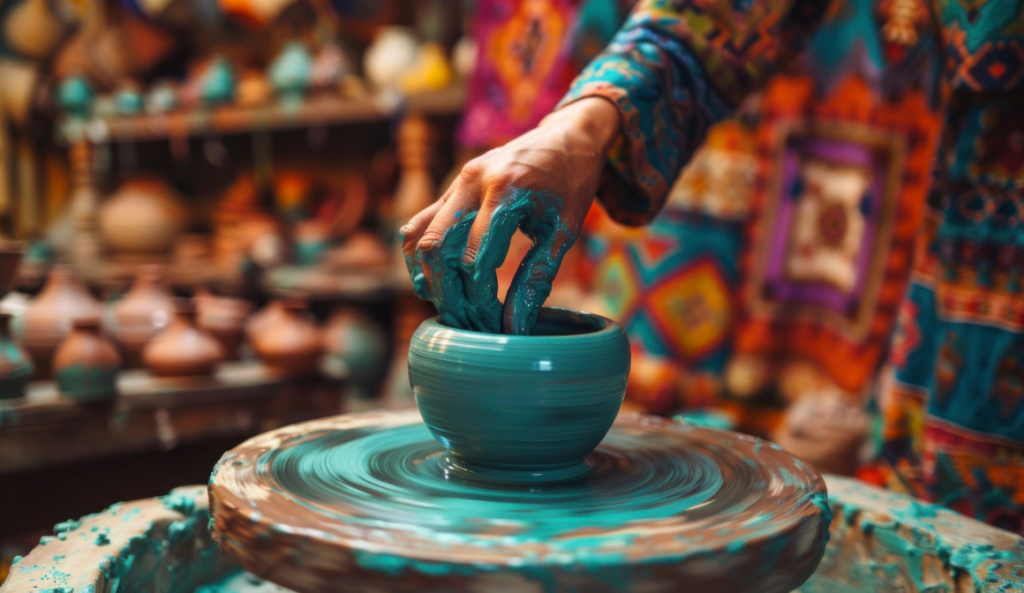
In the Sundarbans, the traditional craft of weaving mats and baskets from locally sourced materials dates back many years. This traditional skill showcases the ingenuity and artistic flair of the local communities.
The crafts are not only practical items for daily use but also represent the resourcefulness of the people in utilizing the natural resources available to them.
7. Festival of Rash Mela:
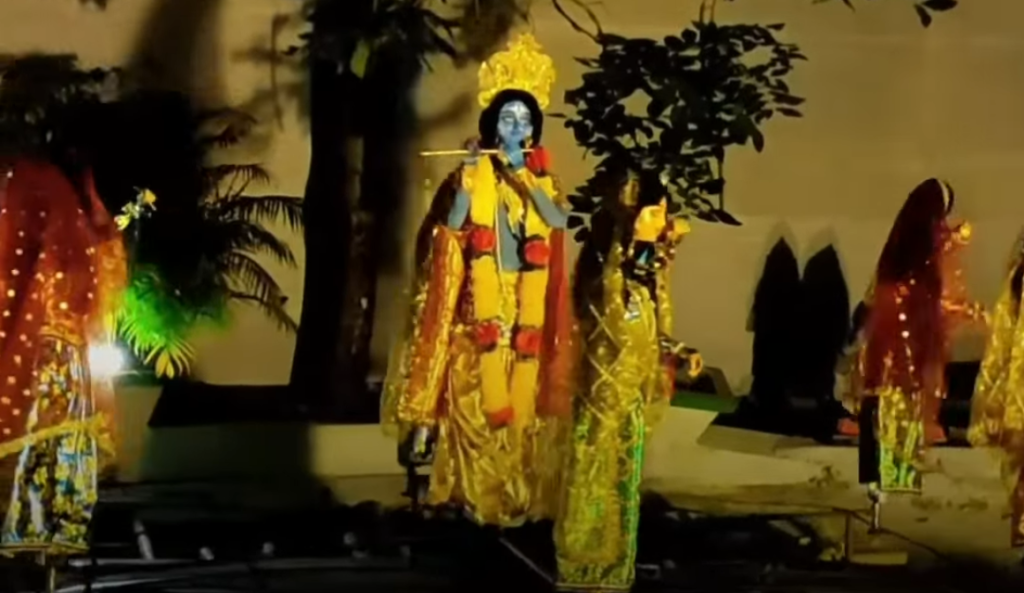
The Rash Mela is a significant festival celebrated on Dubla Island, attracting thousands of pilgrims and tourists. This festival is marked by religious festivities and a fair that highlights the area’s vibrant community spirit.
It is a time of celebration, where cultural heritage is proudly displayed and shared with visitors, further enriching the cultural landscape of the Sundarbans.
Read More:
Sundarban Weekend Getaway: 10 Fun Activities
How Many Days Are Enough for a Trip to the Sundarbans?
Visit The Sundarbans with Solitary Nook to Explore Its Cultural Heritage:
Experience the amazing world of the Sundarbans with us at Solitary Nook. We offer guided tours that let you experience the authentic essence of the place firsthand. Our tours put you up close and personal with the holy rituals and daily lives of the local communities. You may witness their distinctive dances and listen to the music that seeps through their festivities. You will not just see the lovely nature here—you will also learn about the rich culture of the people who live here.
We see to it that you gain a thorough understanding of the cultural customs as well as the natural landmarks. Discover the real spirit of the Sundarbans with the assistance of our experienced guides. Join us at Solitary Nook for an adventure that’s about more than just seeing—it’s about experiencing.
Conclusion:
Are you prepared to explore the magnificent natural and cultural riches of the Sundarbans? Get in touch with Solitary Nook immediately to schedule your tour of this distinctive history. Come explore a world where stories await you around every corner. Come live the Sundarbans with us—do not just visit!
FAQs:
Q1: What is the best time to visit the Sundarbans for cultural festivals?
A. The best time is during the cooler months from November to February when festivals like Rash Mela take place.
Q2: Are there any cultural tours available in the Sundarbans?
A. Yes, Solitary Nook offers specialized cultural tours that highlight the traditions, music, dance, and folklore of the Sundarbans.
Q3: Can tourists participate in local festivals?
A. Absolutely! Participating in local festivals is encouraged as it’s a great way to experience the culture and hospitality of the Sundarbans.



